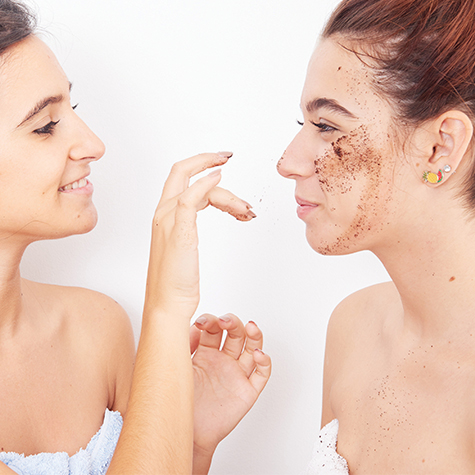
Exfoliation is the process of removing dead skin cells from the outer layer of your skin. While some people believe that this improves the appearance of their skin, dermatologists from the American Academy of Dermatology say it’s not for everyone and – if not done properly – could do more harm than good.
“For some people, exfoliation can actually make their skin worse – with increased redness or acne breakouts,” said board-certified dermatologist Rebecca Clare Tung, MD, FAAD, associate professor of dermatology at Loyola University Medical Center. “If you choose to exfoliate, it’s important to do so safely so that it does not damage your skin.”
Since every type of exfoliation may not work for every skin type, Tung said it’s important to consider your skin type before choosing an exfoliation method: Sensitive skin may sting or burn after product use. Normal skin is clear and not sensitive. Dry skin is flaky, itchy or rough. Oily skin is shiny and greasy. Combination skin is dry in some areas and oily in others.
“Understanding your skin type will help you choose an exfoliation method that best suits your skin,” said Dr. Tung.
Dr. Tung said there are two main methods for at-home exfoliation – mechanical and chemical – and the method you choose should be guided by your skin type. Mechanical exfoliation uses a tool, such as a brush or a scrub, to physically remove dead skin cells. Chemical exfoliation uses chemicals, such as alpha and beta hydroxy acids, to gently dissolve dead skin cells.
To prevent skin damage while exfoliating:
CONSIDER THE SKIN CARE PRODUCTS YOU ALREADY USE. Some medications and even over-the-counter products may cause your skin to be more sensitive or peel, such as prescription retinoid creams or products containing retinol or benzoyl peroxide. Exfoliating while using these products may worsen dry skin or even cause acne breakouts.
SELECT AN EXFOLIATION METHOD THAT SUITS YOUR SKIN TYPE. Those with dry, sensitive or acne-prone skin may prefer just a washcloth and a mild chemical exfoliator, as mechanical exfoliation may be too irritating for this skin type. Those with oily, thicker skin may want to use stronger chemical treatments or mechanical exfoliation. However, avoid strong chemical or mechanical exfoliation if you have a darker skin tone or notice dark spots on your skin after burns, bug bites or acne breakouts. For some people, especially those with darker skin tones, more aggressive forms of exfoliation may result in dark spots on the skin.
BE GENTLE TO YOUR SKIN. If you use a scrub or chemical exfoliator, apply the product gently, using small, circular motions. Do this for about 30 seconds and then rinse off with lukewarm – not hot – water. If you use a brush or sponge, use short light strokes. Never exfoliate if you have open cuts or wounds or if your skin is sunburned.
FOLLOW WITH MOISTURIZER. Exfoliating can be drying to the skin. Apply moisturizer immediately after exfoliating to keep your skin healthy and hydrated.
FIND THE RIGHT SCHEDULE FOR YOU.
How often you exfoliate depends on your skin type and exfoliation method. Generally, the more aggressive the exfoliation, the less often it needs to be done. Be careful not to over-exfoliate, as this could lead to skin that is red and irritated.
“If you aren’t sure what skin type you have, or if you have questions about exfoliating your skin, see a board-certified dermatologist,” said Dr. Tung. “A dermatologist can evaluate your skin and help you decide if exfoliation is beneficial for you.”
These tips are demonstrated in “How to Exfoliate at Home,” a video posted to the AAD website and YouTube channel. This video is part of the AAD’s Video of the Month series, which offers tips people can use to properly care for their skin, hair and nails. A new video in the series posts to the aad.org and YouTube channel each month.






